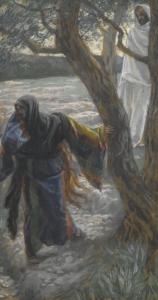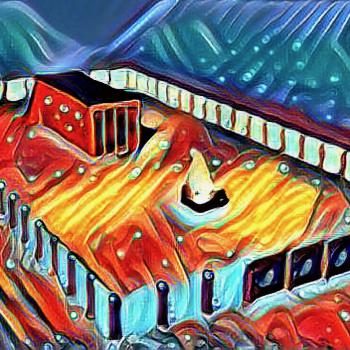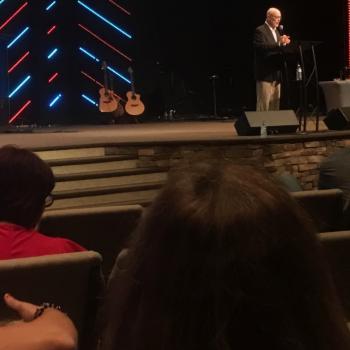I’m going to share a little bit about the history in the Gospels. We’re right in the middle of a writing series on C.S. Lewis.[1] One of the things that brought C.S. Lewis around from being an atheist was understanding the Bible is really good history, not just good mythology. He understood ancient myths, but when he looked at the Bible historically, it was one of the factors that changed his life.
So as you read or listen to this particular piece, this may not be one of the points of history that caught Lewis’ attention. But there are points in the Gospels that are good history, and this is one of them.
A Distinction in Ancient Literature
So just consider this mark of distinction from ancient literature that helps us understands history in the Gospels.[2]
Matthew 28.6: He is not here; for He is risen, as He said. Come, see the place where the Lord lay.
The messenger preaches to the women the 1st Gospel sermon
He is not here; for he is risen, as he said.
He commands them, Come, better translated from the Greek, Come here now! It is a command. It’s an imperative. “Get yourself over here right now and look at this tomb, if you’re doubting at all!”
. . . see the place where the Lord lay.
The word see is interchangable. It’s a Greek thing, where you have to look at the context to know what it is. It is also the word for to know. So, when the angel says “Get over here and see what’s going on,” he says, “Get over here. You need to know without a doubt, that something has happened.”
You need to know. Do you ever need to know sometimes? You just need to know that God is taking care of the situation.
He wants you to know!
The angel wants the message to be crystal clear, no doubts!
The women must know that Jesus is alive
They must know because they are the very first messengers.
Matthew 28.7: And go quickly and tell His disciples that He is risen from the dead, and indeed He is going before you into Galilee; there you will see Him. Behold, I have told you.”
The women are to be the first messengers. They’re the ones to take the Gospel message to the Disciples. And the message even includes a rendezvous point where they will meet in Galilee. This is a real-time event. The women are the first evangelists!
We’re going to explore a little bit of history, just for fun. We study Christian history because our history really teaches us Theology.
In the age when the Gospels were written, women were considered to be of a lower social class. They were literally treated like slaves or property. In fact, they were traded that way.
A distinction in ancient literature
It’s really a mark of distinction in ancient literature, comparing the Gospels to other sources, that all four Gospels say that the women were the first messengers.
 James Tissot | Jesus Appears to Mary Magdalene | circa 1886-94
James Tissot | Jesus Appears to Mary Magdalene | circa 1886-94
Brooklyn Museum | Public Domain
In ancient literature, that does not happen. It’s a mark of distinction in the Gospels. In fact, it’s such a mark, there’s no explanation for it when scholars look back at it.
If they were following the norm of the day, the resurrection stories would simply begin with the appearances of Christ to the men. That’s how it would’ve happened.
The fact that the Gospel writers include women is such a significant point, that it’s actually considered by scholars of literature to be a proof that these are not fake stories. Nobody would brag about the women being the first messengers in that day. It’s actually a mark of historic distinction.
Do you want to know who started women’s rights? It started on Easter Sunday. Jesus also interacted with women in different ways, all through His ministry.
Basic Questions:
1) What proof do we need? That historic fact may be interesting, but is it the proof you need? What proof do you need for the message?
2) What proof do we need to spread the Word? What proof will propel you to tell your friend about it . . . and tell him again . . . and again?
3) What proof do we need that we’re the messenger relaying the message?
4) When we receive the Word of God, do we truly become convinced of it? Do I believe that it can change my life, it can change my family, it can change my society, it can change my world?
5) Do we keep the Word to ourselves under a bushel? Or do we carry it to those around and share the Gospel?
6) Do we just receive the message, or do we become the messenger?
[1] This a/v selection is chosen to correspond with the writing series on C.S. Lewis, since the historicity of the Gospels is a major factor in his conversion.
Aslan Acrostic: Dr. Thomas Woodward shares the story of C.S. Lewis
Vernell Ingle reflects on the works of C.S. Lewis
Vernell Ingle reflects on the works of C.S. Lewis, pt. 2
[2] As previously published by JVI in The Messenger, The Message, and the Risen Lord

















